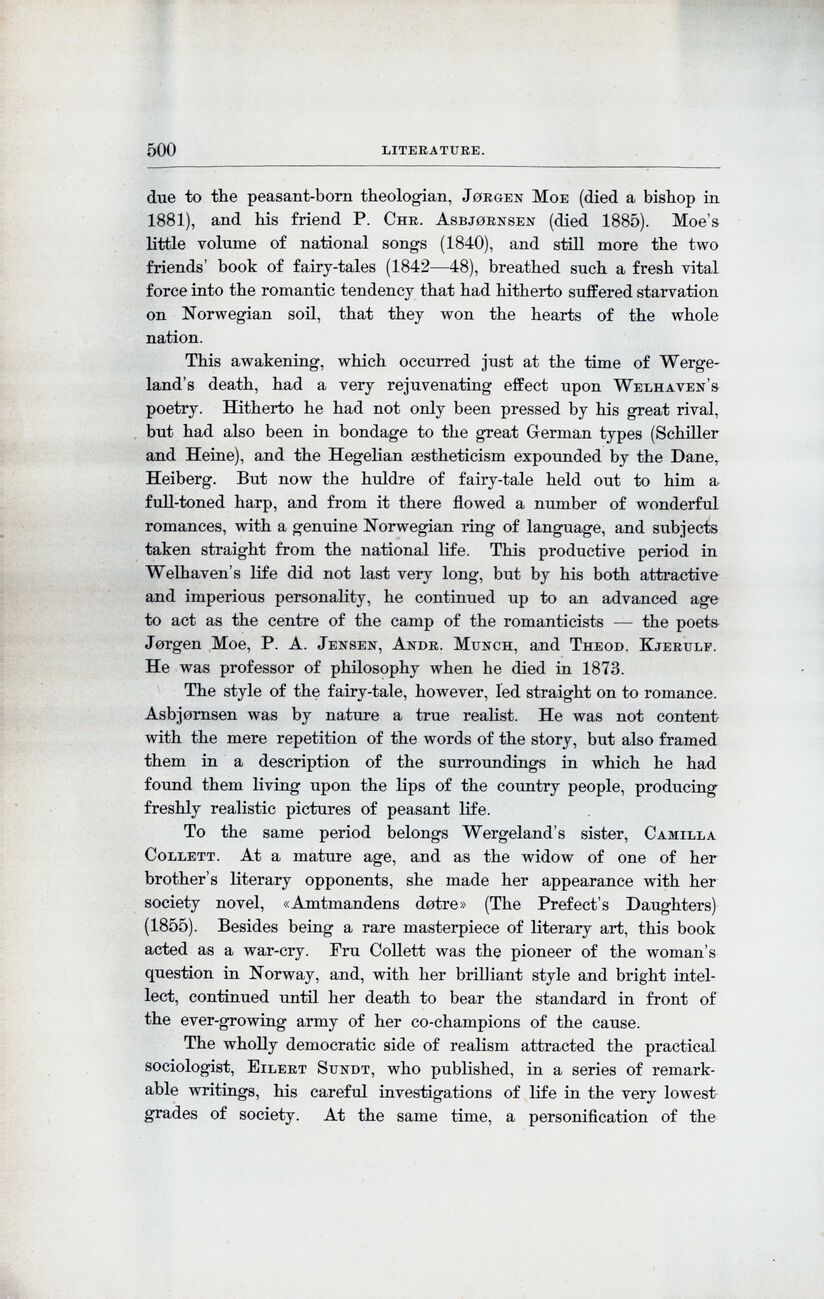
Full resolution (JPEG) - On this page / på denna sida - Literature, by Chr. Brinchmann

<< prev. page << föreg. sida << >> nästa sida >> next page >>
Below is the raw OCR text
from the above scanned image.
Do you see an error? Proofread the page now!
Här nedan syns maskintolkade texten från faksimilbilden ovan.
Ser du något fel? Korrekturläs sidan nu!
This page has been proofread at least once.
(diff)
(history)
Denna sida har korrekturlästs minst en gång.
(skillnad)
(historik)
due to the peasant-born theologian, Jørgen Moe (died a bishop in
1881), and his friend P. Chr. Asbjørnsen (died 1885). Moe’s
little volume of national songs (1840), and still more the two
friends’ book of fairy-tales (1842—48), breathed such a fresh vital
force into the romantic tendency that had hitherto suffered starvation
on Norwegian soil, that they won the hearts of the whole
nation.
This awakening, which occurred just at the time of
Wergeland’s death, had a very rejuvenating effect upon Welhaven’s
poetry. Hitherto he had not only been pressed by his great rival,
but had also been in bondage to the great German types (Schiller
and Heine), and the Hegelian æstheticism expounded by the Dane,
Heiberg. But now the huldre of fairy-tale held out to him a
full-toned harp, and from it there flowed a number of wonderful
romances, with a genuine Norwegian ring of language, and subjects
taken straight from the national life. This productive period in
Welhaven’s life did not last very long, but by his both attractive
and imperious personality, he continued up to an advanced age
to act as the centre of the camp of the romanticists — the poets
Jørgen Moe, P. A. Jensen, Andr. Munch, and Theod. Kjerulf.
He was professor of philosophy when he died in 1873.
The style of the fairy-tale, however, led straight on to romance.
Asbjørnsen was by nature a true realist. He was not content
with the mere repetition of the words of the story, but also framed
them in a description of the surroundings in which he had
found them living upon the lips of the country people, producing
freshly realistic pictures of peasant life.
To the same period belongs Wergelands sister, Camilla
Collett. At a mature age, and as the widow of one of her
brother’s literary opponents, she made her appearance with her
society novel, «Amtmandens døtre» (The Prefect’s Daughters)
(1855). Besides being a rare masterpiece of literary art, this book
acted as a war-cry. Fru [[** sic! ikke Mrs.]] Collett was the pioneer of the woman’s
question in Norway, and, with her brilliant style and bright
intellect, continued until her death to bear the standard in front of
the ever-growing army of her co-champions of the cause.
The wholly democratic side of realism attracted the practical
sociologist, Eilert Sundt, who published, in a series of
remarkable writings, his careful investigations of life in the very lowest
grades of society. At the same time, a personification of the
<< prev. page << föreg. sida << >> nästa sida >> next page >>